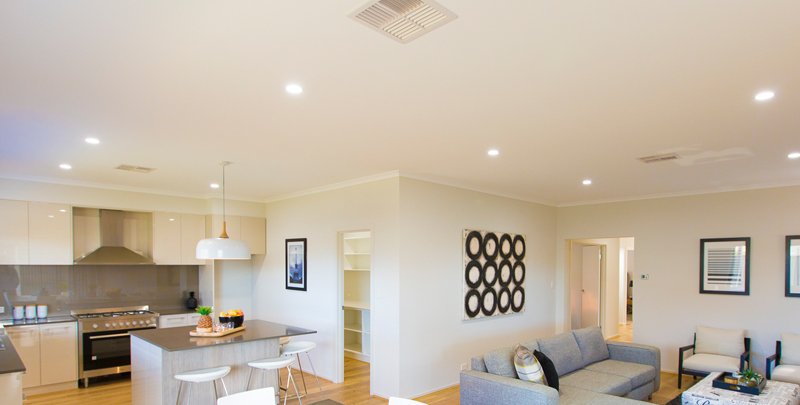NEWS
Choosing the Right Downlights for Different Areas of Your Home

Downlights, also known as recessed or can lights, have become increasingly popular in modern home lighting design due to their sleek and unobtrusive appearance. They provide a clean and contemporary look while offering functional illumination. Nevertheless, selecting the right downlights for different areas of your home involves carefully considering factors such as the room’s purpose, size, and existing decor. We will explore the various aspects to consider when choosing downlights for different areas of your home, highlighting the importance of aesthetics and functionality. In the process of finding the best LED downlights for your home, it’s essential to consider factors such as energy efficiency, color rendering, and dimming options to ensure they meet both your aesthetic and practical lighting needs.
Various aspects to consider when choosing Downlight
- The Living Room:
The living room is often the central gathering place in a home, where activities such as watching TV, reading, and entertaining guests occur. Balancing ambient and task lighting is essential when selecting downlights for this area. Opt for fixtures with a warm color temperature (around 2700-3000K) to create a cozy and inviting atmosphere. Recessed downlights with dimming capabilities are ideal for the living room, as they allow you to adjust the lighting intensity according to the occasion. For example, during a movie night, you can dim the lights to create a cinematic ambiance, while brighter lighting suits reading or socializing with friends.
- The Kitchen:
In the kitchen, where precise tasks such as cooking and meal preparation are common, functional lighting is paramount. Downlights can be strategically placed to illuminate countertops, workspaces, and kitchen islands. Consider fixtures with a cooler color temperature (around 3500-4000K) for task lighting to promote focus and visibility. Additionally, under-cabinet downlights can be used to enhance the kitchen’s aesthetics and functionality. These fixtures provide directed light onto the countertop, aiding in meal preparation and adding a decorative touch to the space.
- The Bedroom:
The bedroom is a multifunctional space where relaxation, reading, and sleeping all occur. Therefore, the lighting in this area should be adaptable to different activities and moods. For general ambient lighting, recessed downlights with warm color temperatures are suitable for creating a tranquil atmosphere. Incorporating dimmable downlights in the bedroom allows you to adjust the lighting to your preference, whether for winding down before sleep or reading a book. Consider placing wall-mounted downlights or sconces near the bedside for task lighting, allowing for focused illumination without disturbing a sleeping partner.
- The Bathroom:
In the bathroom, a combination of task and ambient lighting is crucial. Recessed downlights can be installed above the vanity mirror to provide even and shadow-free illumination for grooming tasks. Choosing fixtures with a color temperature of around 3000-4000K is advisable to mimic natural daylight, which is ideal for tasks like makeup application. To complement the task lighting, consider using additional downlights or wall-mounted fixtures to create ambient lighting in the bathroom. This can help maintain a balanced and visually pleasing environment while providing sufficient illumination for all bathroom activities.
- The Dining Area:
Regarding the dining area, lighting plays a significant role in setting the mood for meals and gatherings. A popular choice is pendant downlights or chandeliers placed above the dining table, adding a decorative element to the space while providing focused illumination for dining. Contemplate combining pendant lights with recessed downlights around the room’s perimeter for a more versatile setup. This combination allows you to adjust the lighting intensity as needed, making the dining area suitable for intimate dinners and larger gatherings.
- The Hallways and Corridors:
Hallways and corridors are often overlooked when it comes to lighting design. However, proper illumination in these areas is essential for safety and wayfinding. Recessed downlights can be strategically spaced along hallways to provide even, unobtrusive lighting. You can use wall-mounted downlights or sconces along the walls to create visual interest and prevent a monotonous look. These fixtures provide additional illumination and contribute to the overall aesthetics of the space.
- The Outdoor Areas:
Outdoor downlights can enhance the curb appeal and security of your home. When selecting downlights for outdoor areas such as the front porch, back patio, or garden, consider weather-resistant and durable fixtures to defy outdoor conditions. For the front entrance or porch, wall-mounted downlights can provide welcoming illumination while enhancing the architectural features of your home. In garden or landscaping applications, in-ground or well-lights can highlight trees, pathways, or architectural elements.
Choosing the right downlights for diverse areas of your home implicates a thoughtful balance between aesthetics and functionality. Consider the specific needs and activities in each space, as well as the decor and ambiance you wish to create. By selecting downlights that link with these factors, you can enhance your home’s overall comfort, functionality, and visual appeal while ensuring that the lighting is both practical and pleasing to the eye. Remember that a well-planned lighting scheme can transform a house into a welcoming and functional home.
Harper Harrison is a reporter for The Hear UP. Harper got an internship at the NPR and worked as a reporter and producer. harper has also worked as a reporter for the Medium. Harper covers health and science for The Hear UP.










